Index

Review: More power in compact package
Today we will take a look at the PowerColor TurboDuo Radeon R9 285. The card is based on AMD’s new Tonga GPU, launched on September 2nd. You can view the Tonga GPU as a “light” version of the Hawaii GPU.
Because Hawaii is the high-end chip and Tonga is mainstream part, the latter has fewer shader units, less memory, a narrower memory bus and some other performance related chip parts were also sacrificed. Both GPUs support TrueAudio, FreeSync and Mantle.
TrueAudio and Mantle are implemented in only a few games and to use FreeSync we need a new FreeSync capable monitor – and those monitors are still not available. We decided to point this out because it could be a factor for some potential customers, depending on what they are upgrading from. For some the new Tonga series could be a great choice, but others may not be impressed by TrueAudio or Mantle. In terms of performance, Tonga products should roughly be on par with the R9 280 and the GTX 760.
PowerColor decided to add a bit of value to the TurboPro R9 285 with a custom design and a factory overclock. The TurboDuo cooler is quiet and it performs well, while Tonga promises to be a good overclocker. We will take a closer look at both aspects of the card a bit later.
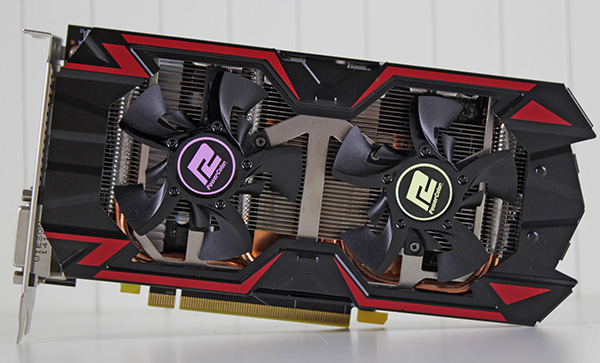
The TurboDuo cooler should make it a bit easier to score high clocks thanks to enhanced cooling performance and stability.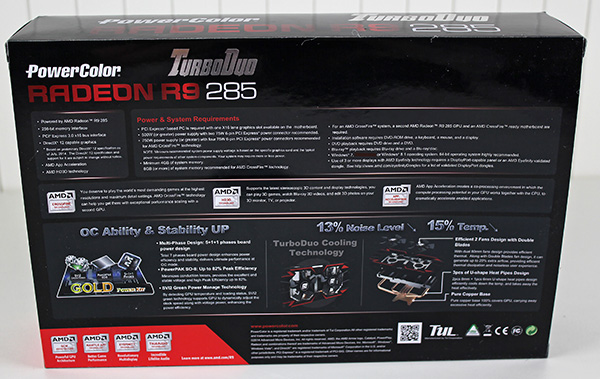
And now some brief overview of the new GPU. The AMD Radeon R9 285 graphics card is based on the Tonga Pro GPU with 1792 Stream Processors. It was launched on September 2nd with a $249 price tag.
The new R9 285 will replace the old, Tahiti Pro based R9 280 graphics card and competes directly with Nvidia's GTX 760 graphics card. All AMD AIB are allowed to launch their own custom designs from day one.
The GPU packs 1792 Stream Processors, 112 TMUs, 32 ROPs and a 256-bit memory interface which is paired up with either 2GB or 4GB of GDDR5 memory. The reference clocks for the AMD R9 285 are set at 918MHz for the GPU and 1375MHz (5.5GHz effective) for the memory. The Tonga Pro GPU is made on the 28nm process and is more power-efficient, with a 190W TDP (R9 270X has 180W TDP, R9 280 has 200W TDP and R9 280X has 250W TDP).
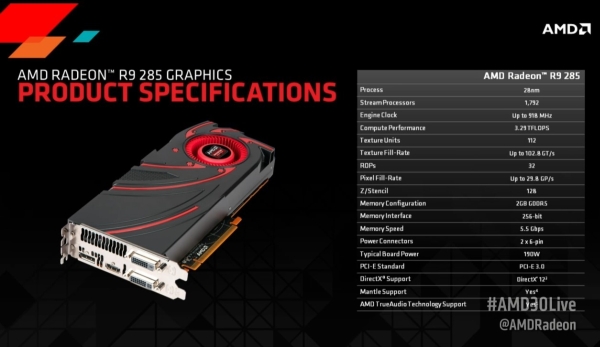
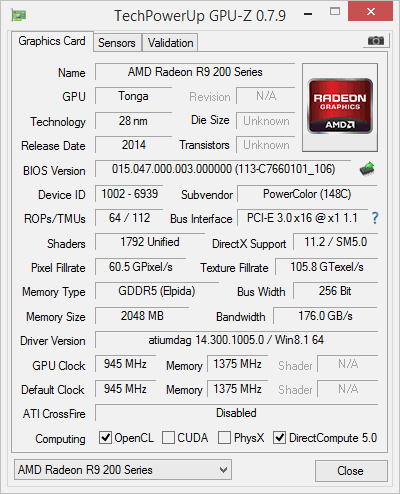
According to AMD's own product slide, the Radeon R9 285 should fit between the R9 270X and the R9 280X, at least until AMD officially launches the fully enabled Tonga XT GPU with 2048 Stream Processors which should replace the Tahiti XT based R9 280X.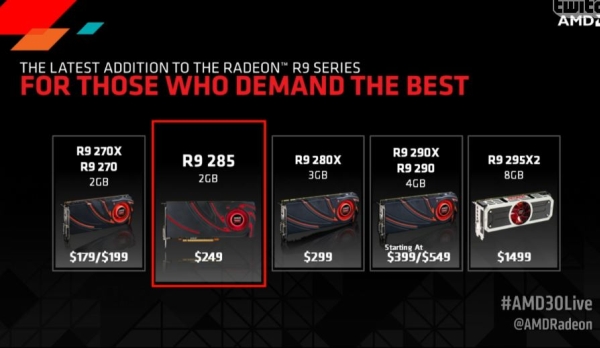
The packaging made for the TurboDuo R9 285 is merely a repainted version of the boxes made for the TurboDuo R9 280/280X cards. We can’t complain as we like the small size and clean simple design with all necessary and important information is on the box.
The card is just 21cm long, which makes it quite interesting for small form factor rigs such as HTPCs and ITX cubes.
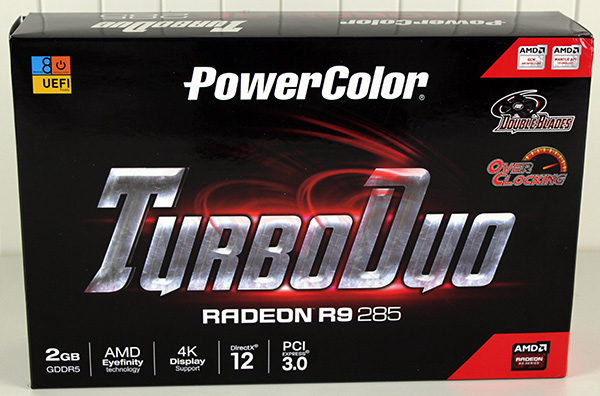
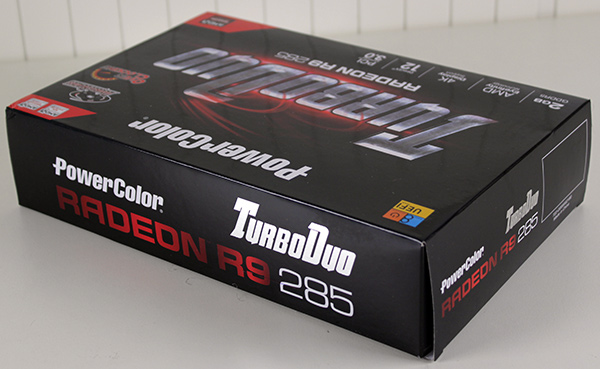

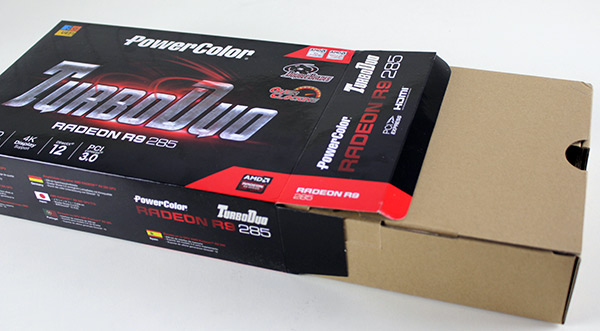
You won’t find much in the box, just the quick installation guide. There are no additional video converters, as the card comes with two dual-link DVI connectors, one standard HDMI and one DisplayPort connector. You can use combination of any three video outs at the same time.
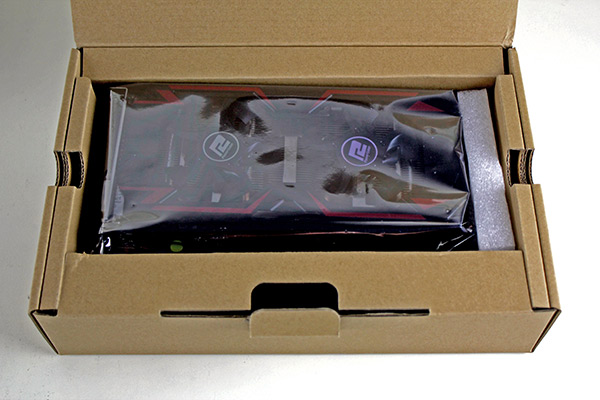
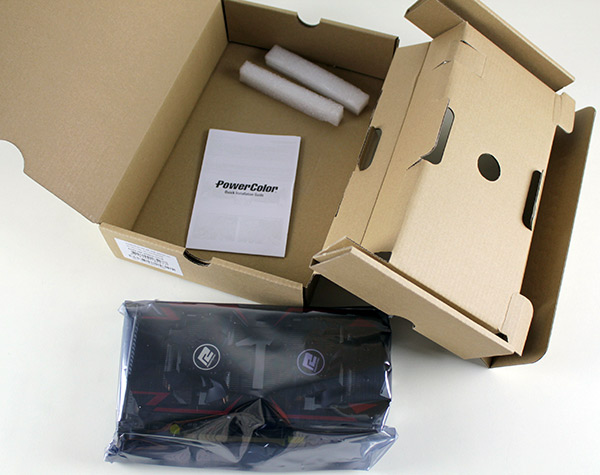
The TurboDuo R9 285 looks promising and once you pick it up it feels even better thanks to its metal shroud. That also makes the card rather heavy, but since it is a mid-range product it’s not too bulky or too heavy, but it does feel somewhat better than your average mid-range card. The TurboDuo R9 285 measures 207mm x 111mm x 38mm. For comparison the R9 270 PCX+ measures 240mm x 111mm x 38mm. So now we have more power in a smaller package, at almost the same TDP.

Image below shows R9 270 PCX+.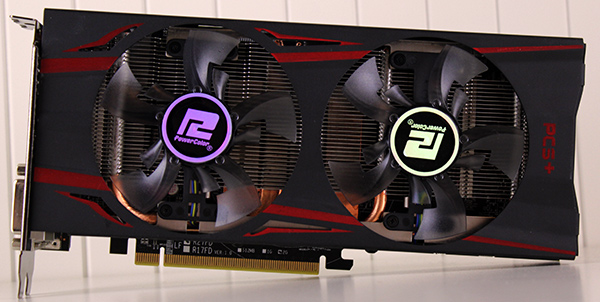
The top of the card is also quite attractive thanks to the differently shaped shroud.
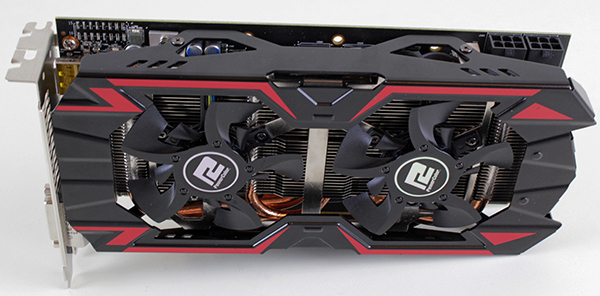
The R9 285 lacks Crossfire connector. AMD’s XDMA interface for bridgless Crossfire is implemented which improves Crossfire performance. The PCI-E 3.0 slots have plenty of bandwidth to ensure all inter-GPU communication between two or more R9 285 cards. It also results in a ‘cleaner’ design with fewer points of failure.
The following images illustrate the difference, this is what the 270 PCX+ looks like. It has a Crossfire connector since it is based on the older design (previously the R7870 GHz / Pitcairn).
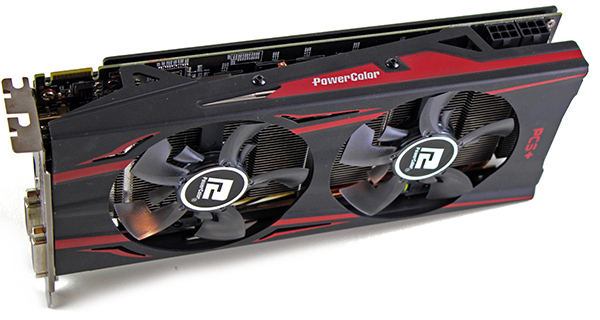
The shroud is opened on all sides and the openings serve as exhaust vents.
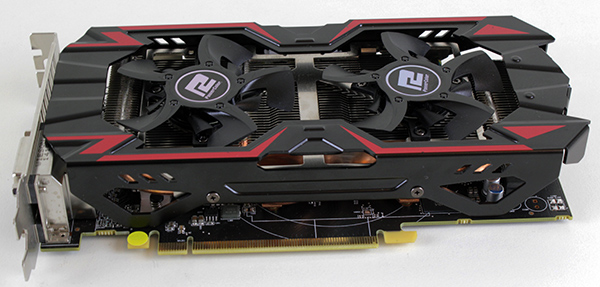

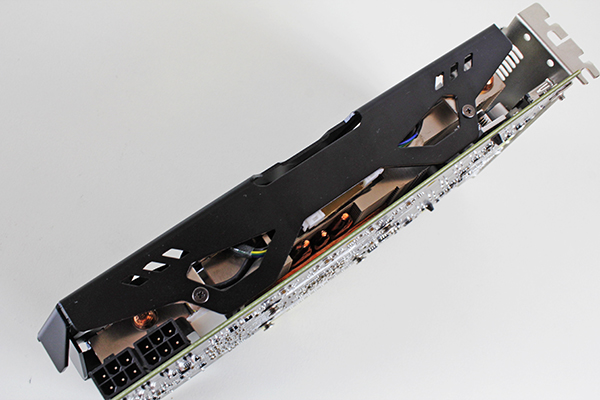
The R9 285 needs two 6-pin power cables for normal operation. According to AMD the R9 285 will draw a maximum of 190 Watts.
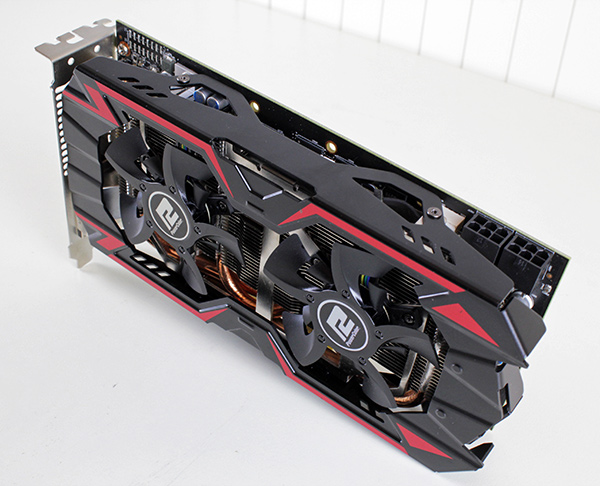
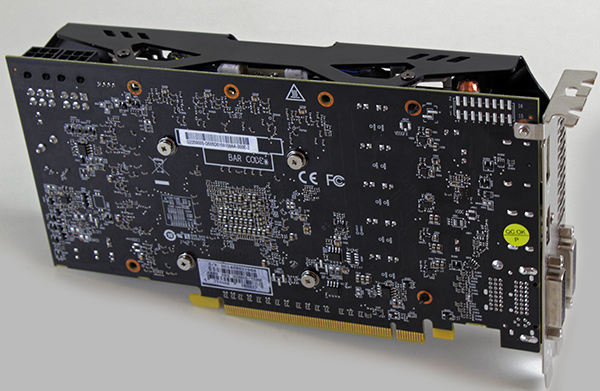
On the I/O panel you will find one standard DisplayPort, one standard HDMI and two dual-link DVI connectors. Next generation 4K (4096x2160) and UHD (3840x2160) resolutions are supported, making the card future proof to some extent. The biggest problem for 4K/UHD adoption is the relatively high price of even the cheapest monitors and the fact that entry level models can’t do 60Hz.
You can also use any combination of three of the four display connectors to run a three-monitor setup using the same or different panels. An HDMI 1.4a compatible sound device is built in the GPU, which also includes HD audio and Blu-ray 3D movies support so there is no need to connect the card to your motherboard’s/soundcard’s SPDIF out to get audio and video via HDMI.
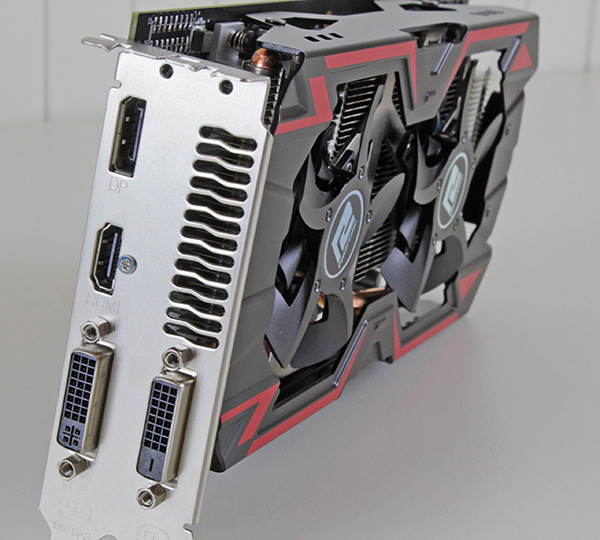
Since the shroud is open on all sides there, it is easy to get a good look at the card while it is still mounted.
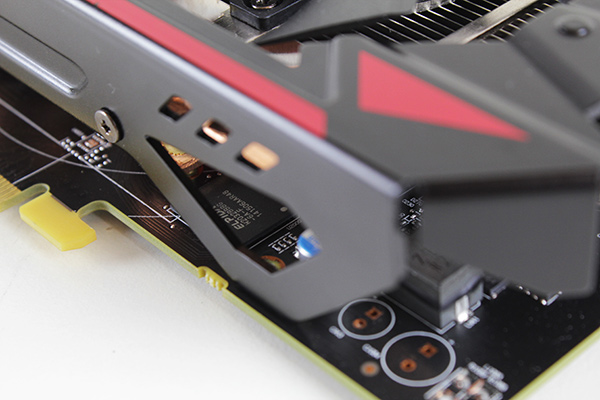
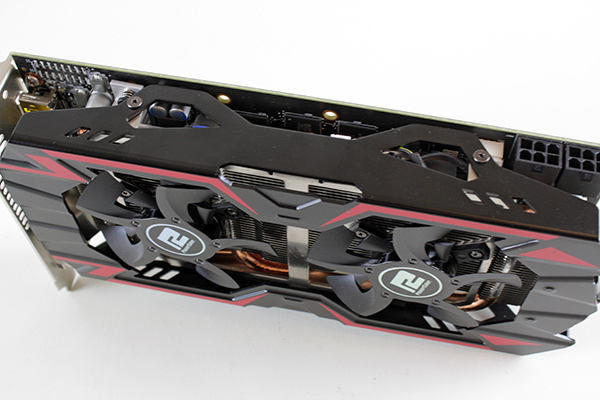
Here are the fans and their cables, some memory modules and a few other components on the PCB.
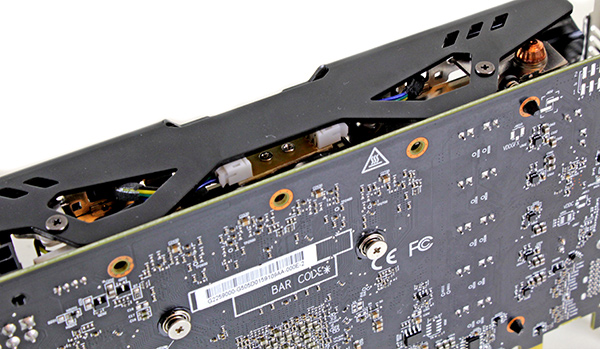
The dual slot cooler uses two 7cm fans and the double bladed fans look rather unusual. PowerColor claims the double-blade design can focus airflow into the centre and increase airflow by up to 20 percent compared to traditional designs. The design is also supposed to prevent dust from depositing at the bottom.
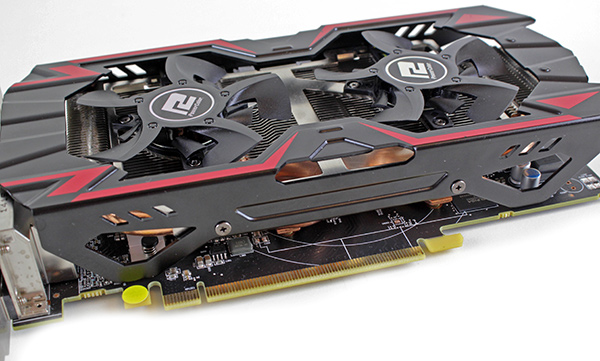
The shroud of the cooler can be removed easily, there is no need to remove the entire cooler.
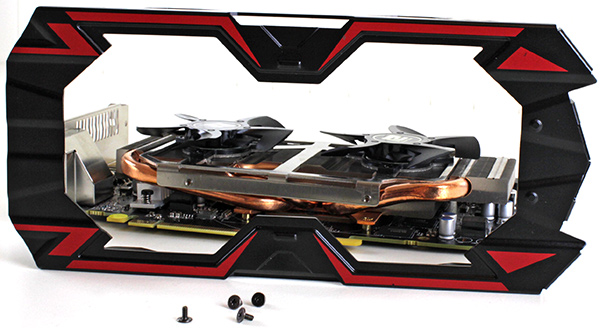
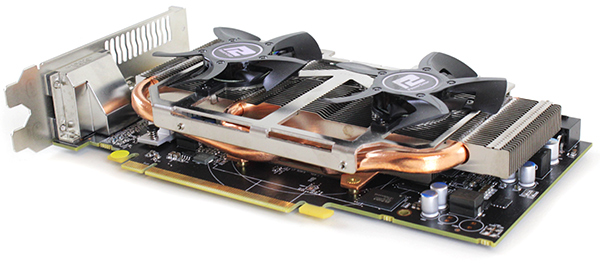
The heatsink uses somewhat thicker fins and they feel sturdy, not like something that would easily bend while performing maintenance.
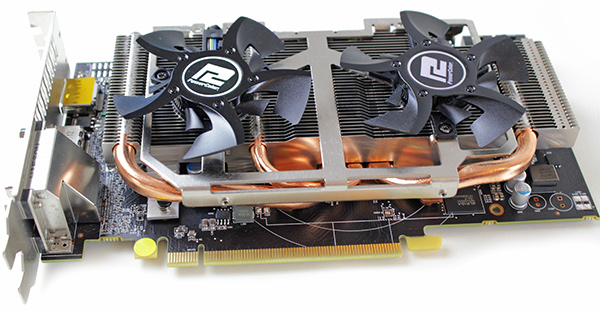
The heat dissipation system employs a total of three U–shaped heatpipes, two 8mm and one 6-mm pipes are clearly visible.

Tinkerers should be able to easily remove the shroud and fans, allowing access to the whole heatsink. You can remove the fans simply by undoing four screws that keep them attached to the heatsink.
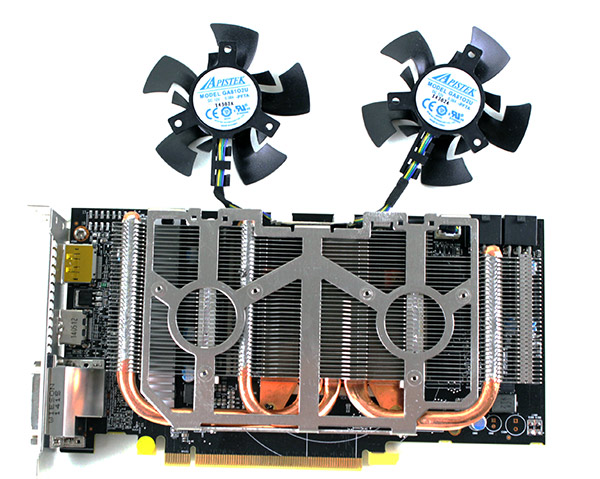
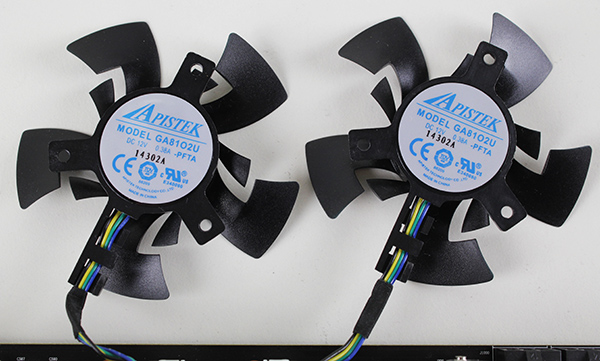
The Double Blade fans are not mounted on the heasink directly, they rest on an aluminium frame which doubles as a shroud support.
Here you can see the bear heatsink and we assure you that PowerColor did not cut any corners. Everything feels robust and very precise. We cannot escape the feeling that the heatsink could have been a bit bigger and backed by bigger fans. Although the card is practically inaudible, temperatures can exceed 78 degrees Celsius. This is not a big concern, as the components can easily handle even more.
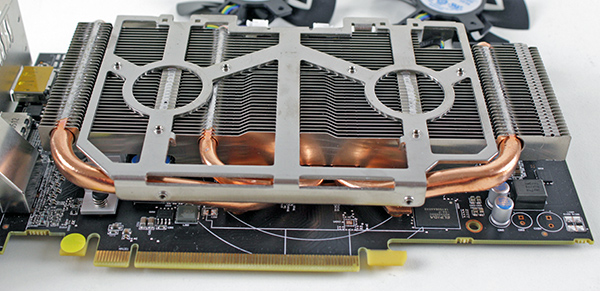
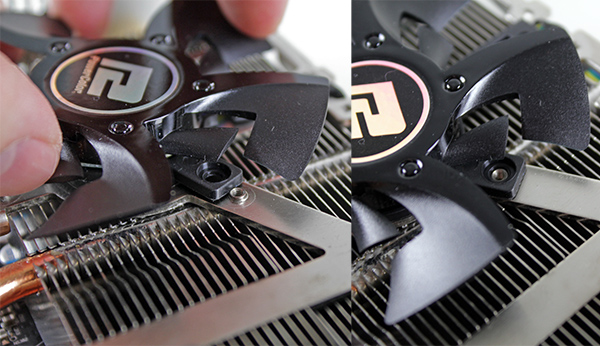
You can see the heatsink, fan frame and fan wiring in the next photo.
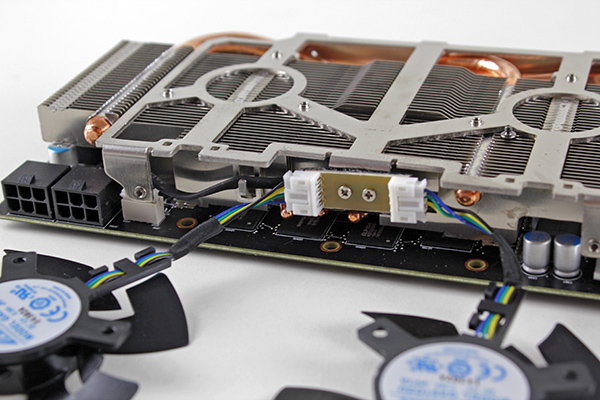
The opaque black plastic used in the fan blades is not attractive like the transparent plastic used in the R7 270PCS+ (image below), but of course it has no impact on performance.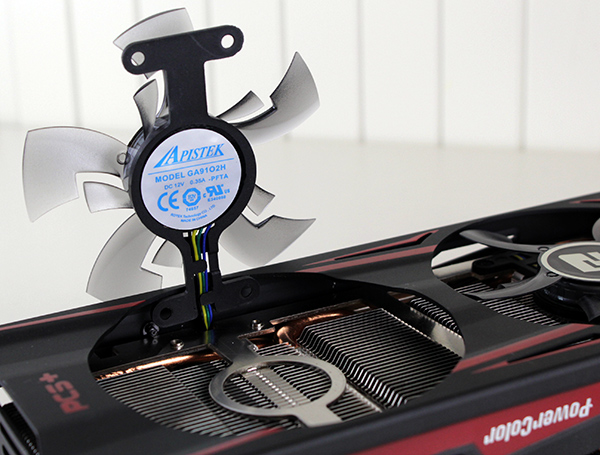
PowerColor uses Elpida memory rated for data rates of up to 6Gbps (1500MHz). The card has of eight 256MB chips for a total of 2GB of GDDR5. The memory clock is 1375MHz, which appears to leave a bit of room for overclocking. The chips are cooled by air that circulates through the main heatsink. VRM cooling is handled by a separate aluminium heatsink. PowerColor’s Gold Power Kit delivers 5+1+1 phase power.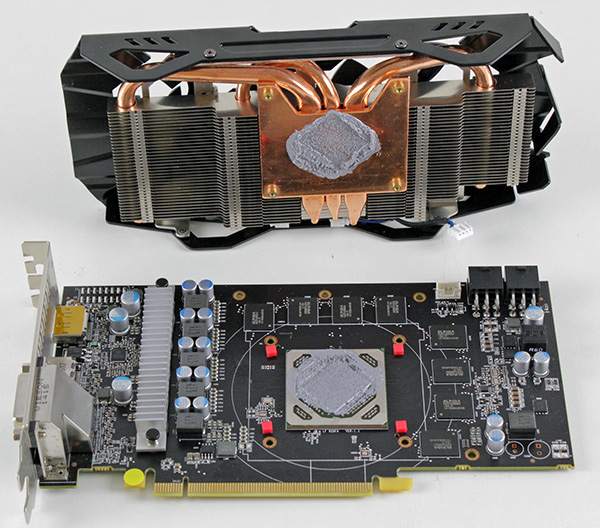
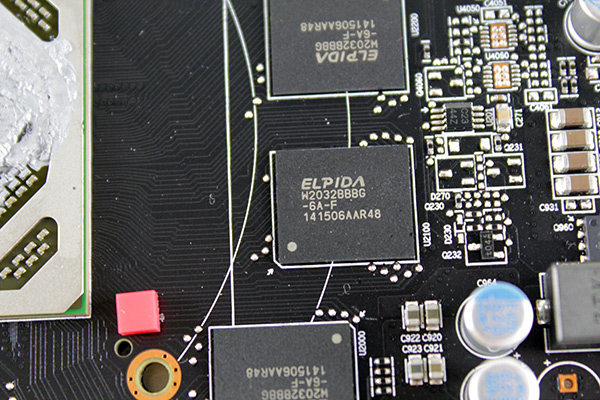
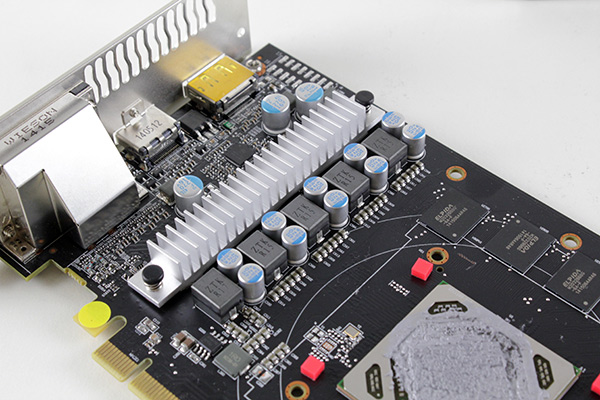
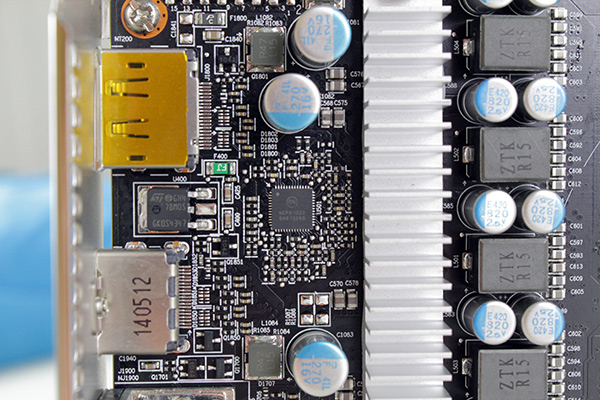

Testbed:
- Motherboard: Intel DZ87KLT-75K
- CPU: Intel Core i7 4770K, 4x3.5GHz (Haswell)
- CPU Cooler: EVGA
- Memory: 2x4GB Corsair DDR3 2400MHz
- Harddisk: Corsair Neutron GTX 240GB
- Case: CoolerMaster Cosmos II
- Operating System: Win8.1 64-bit
AMD-Catalyst-14.30.1005-Radeon-R9-285-Windows-Aug29
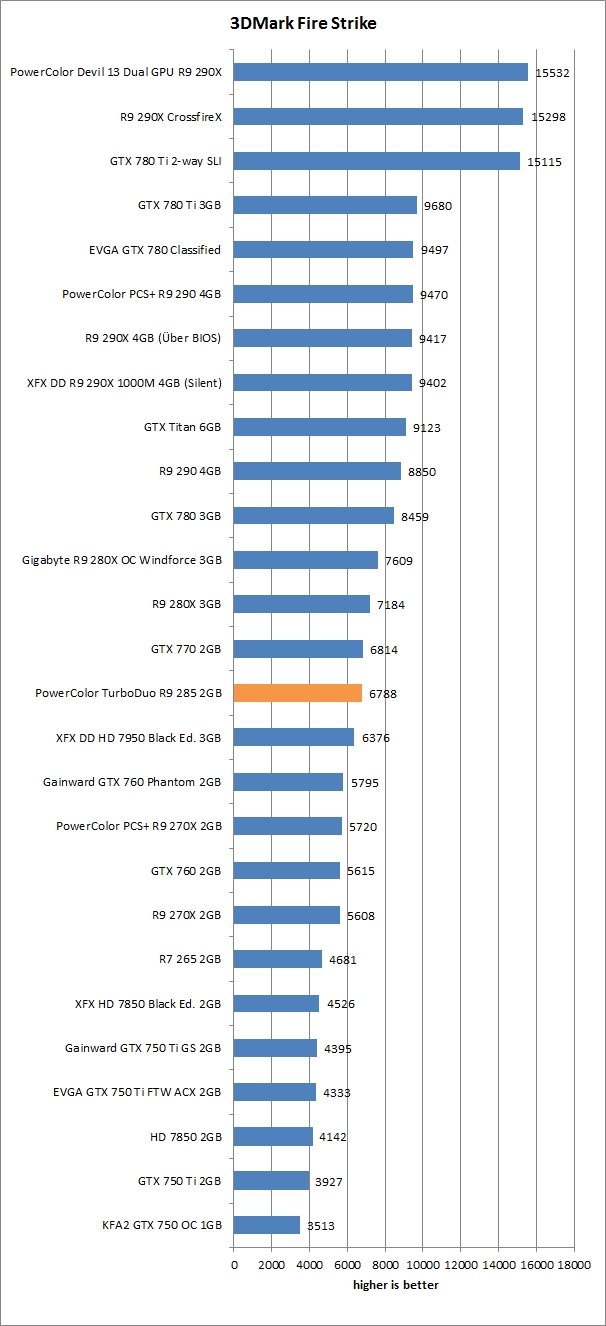
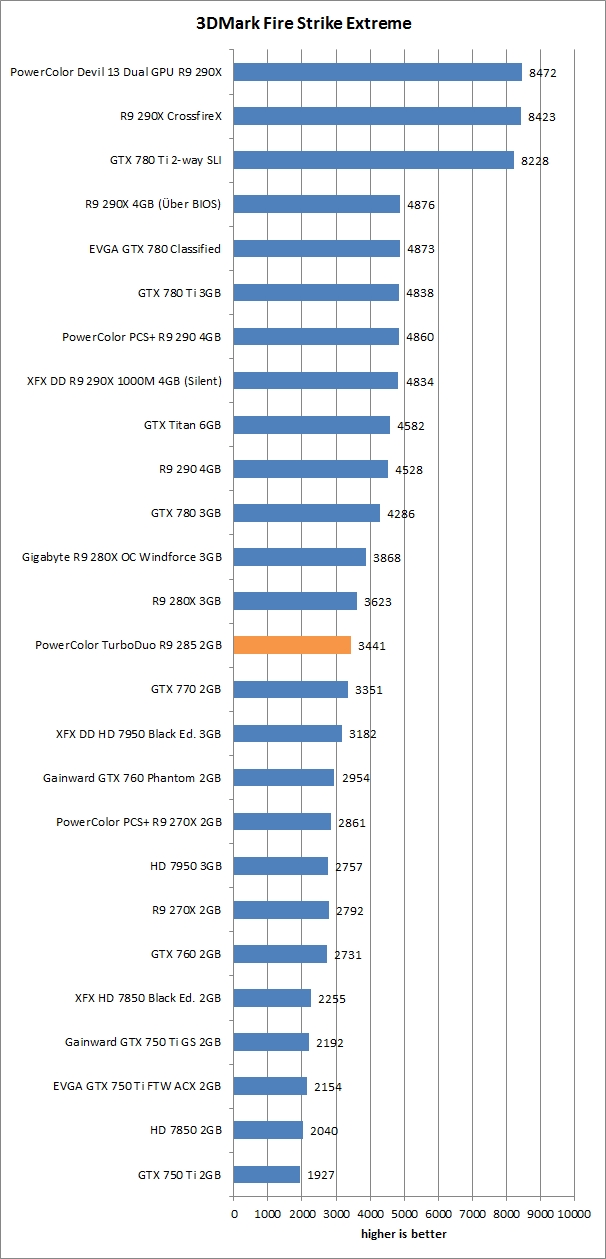
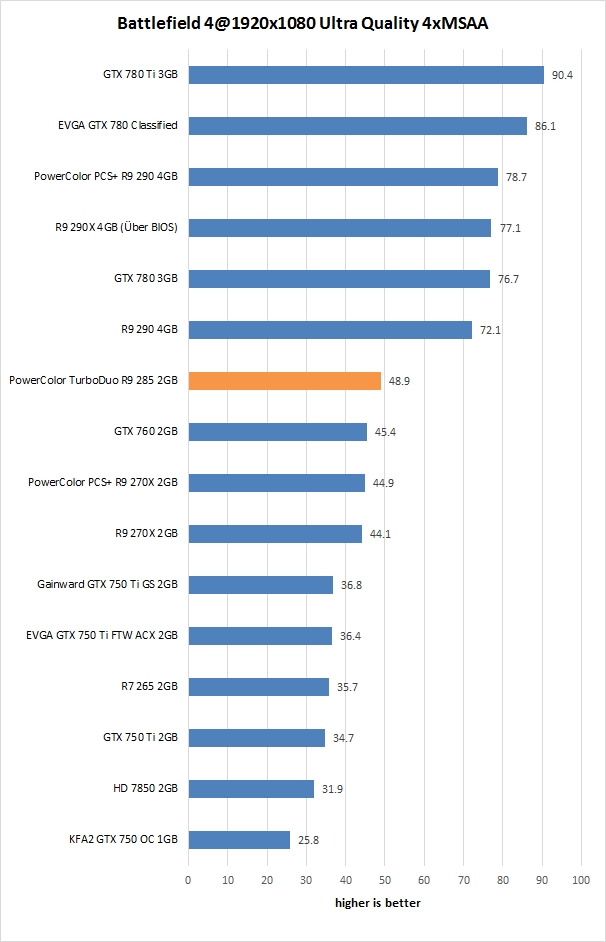
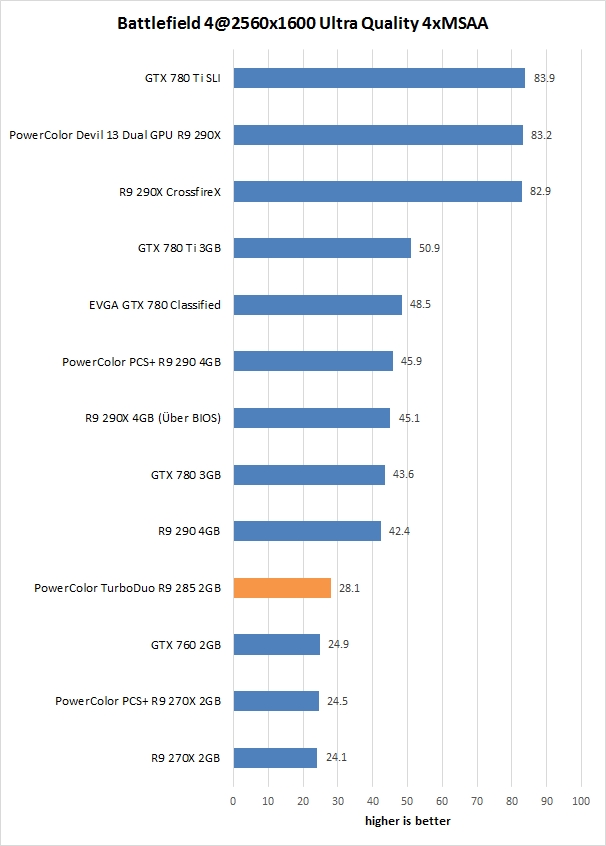
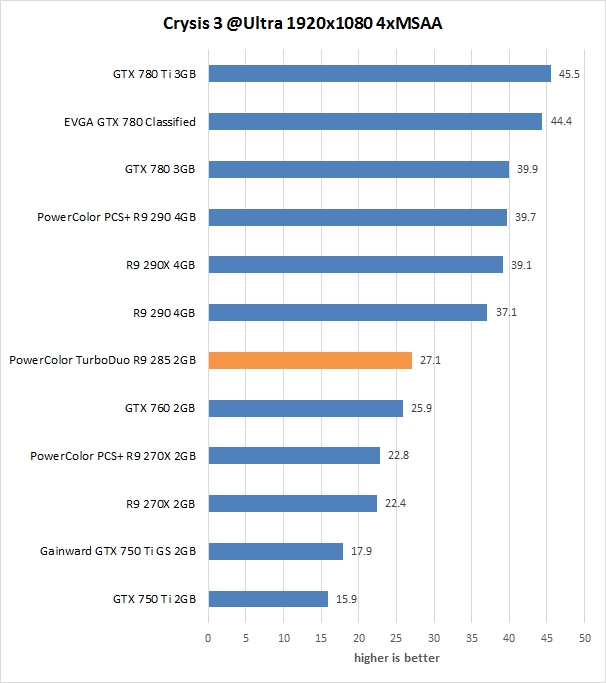
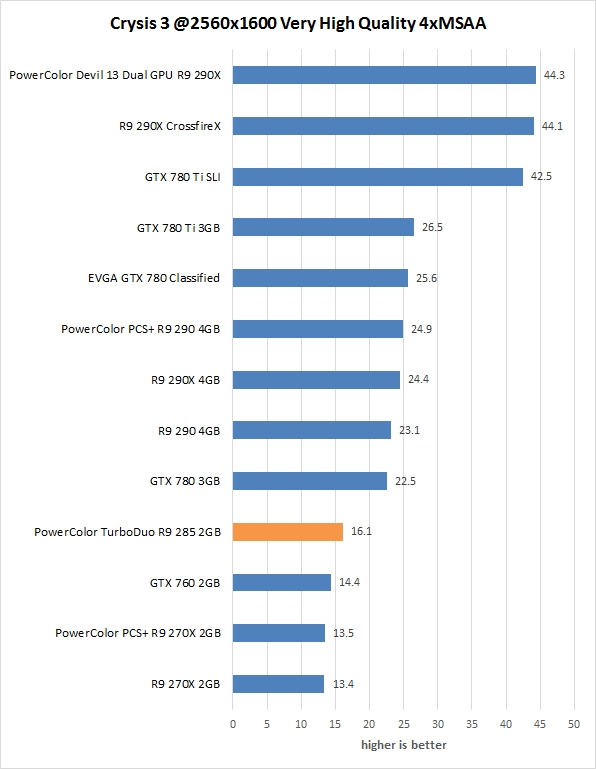
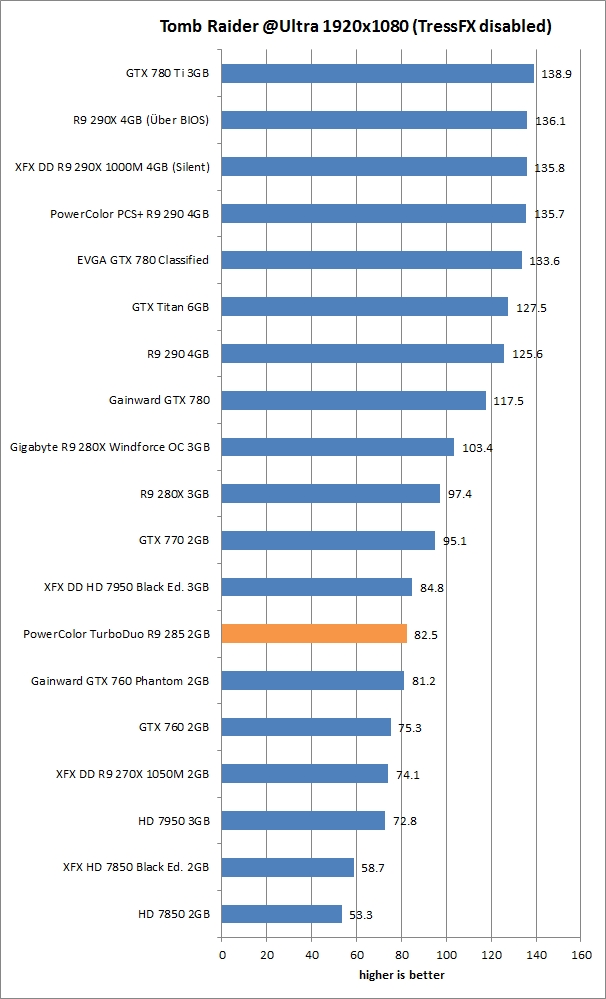
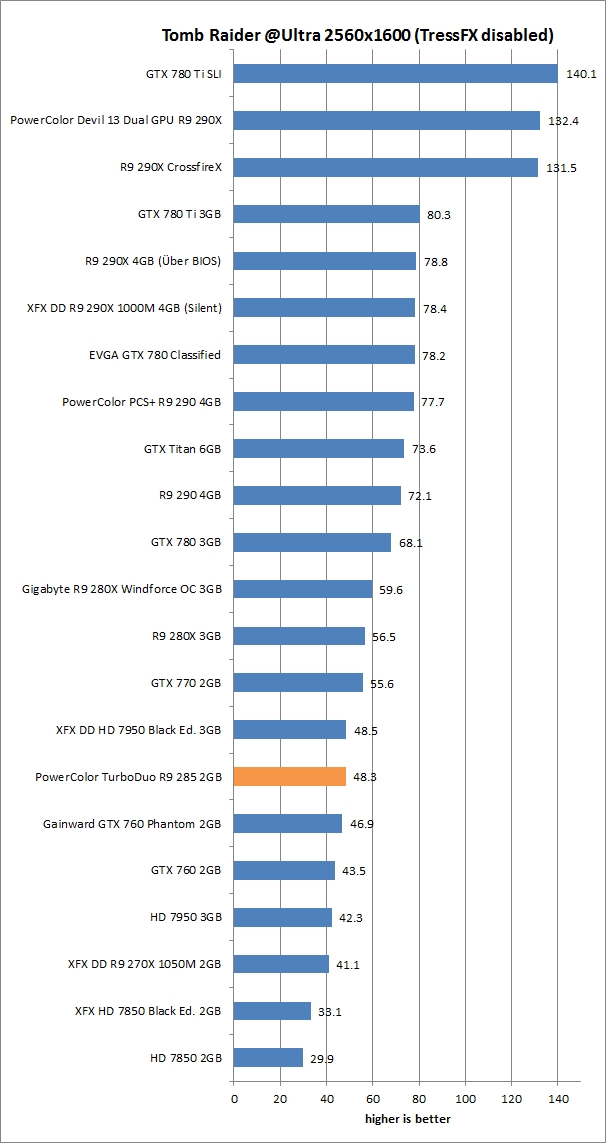
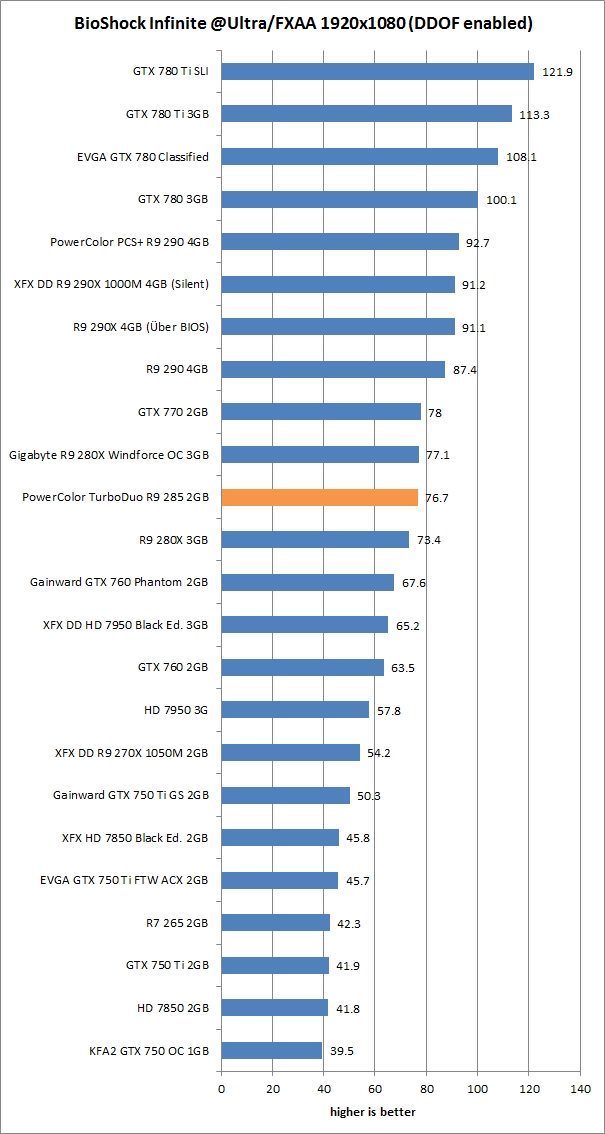
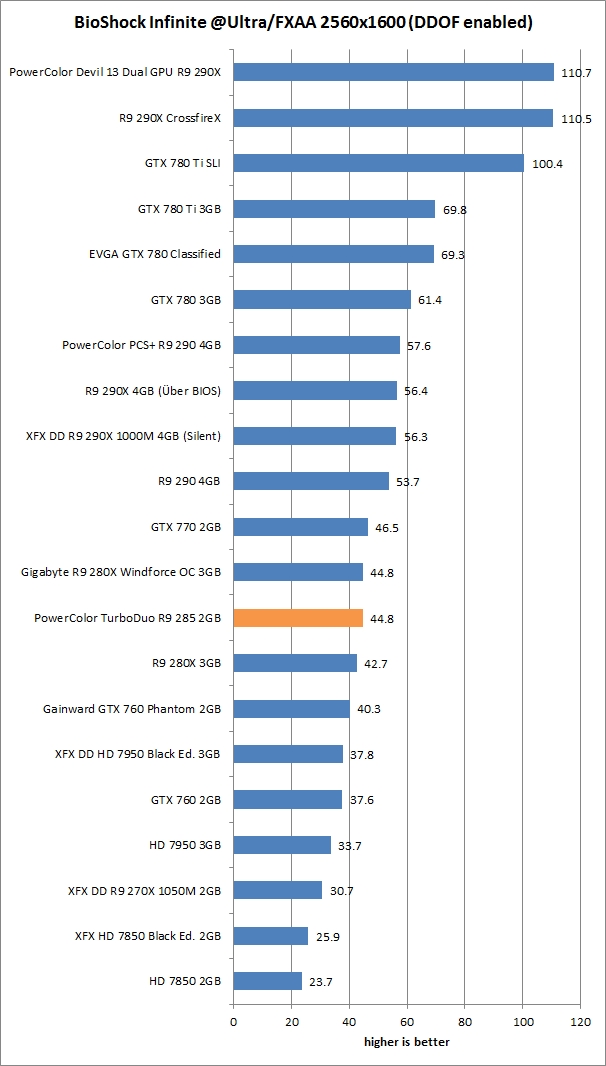
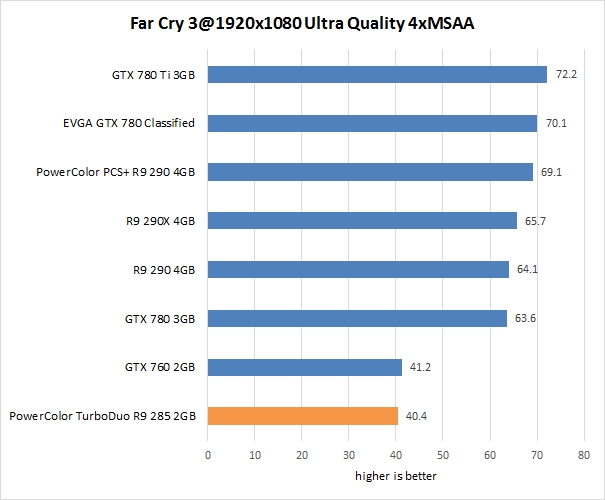
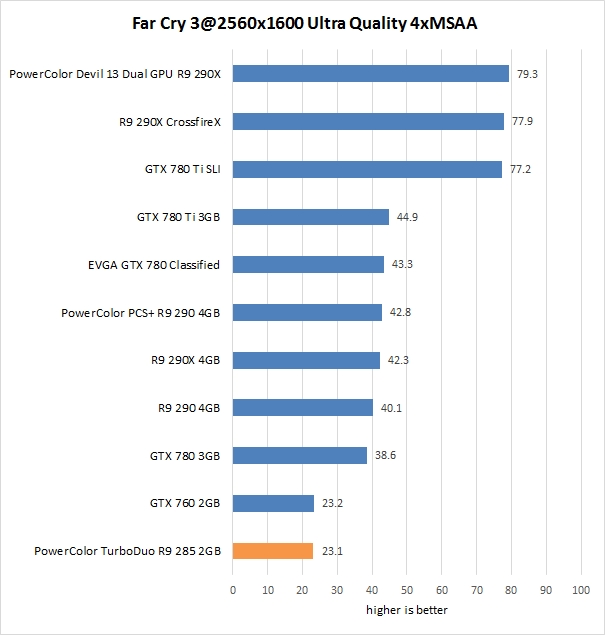
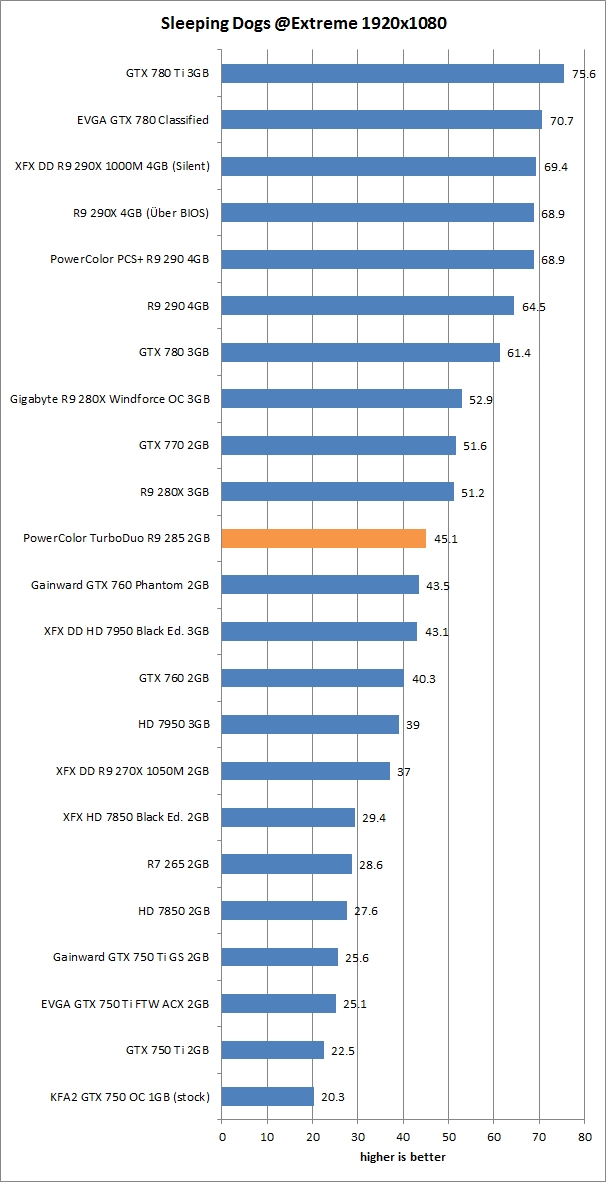
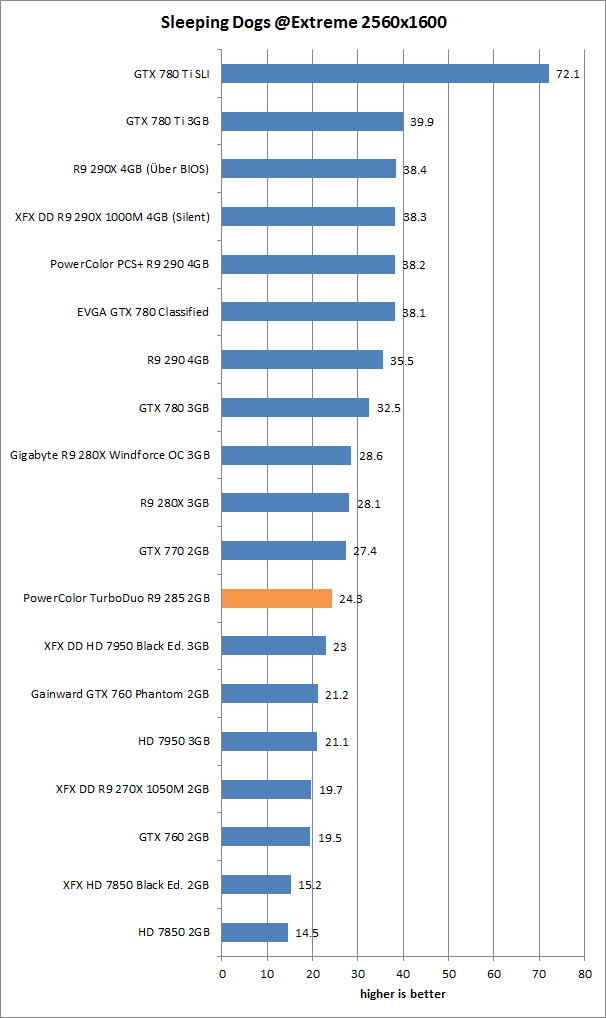
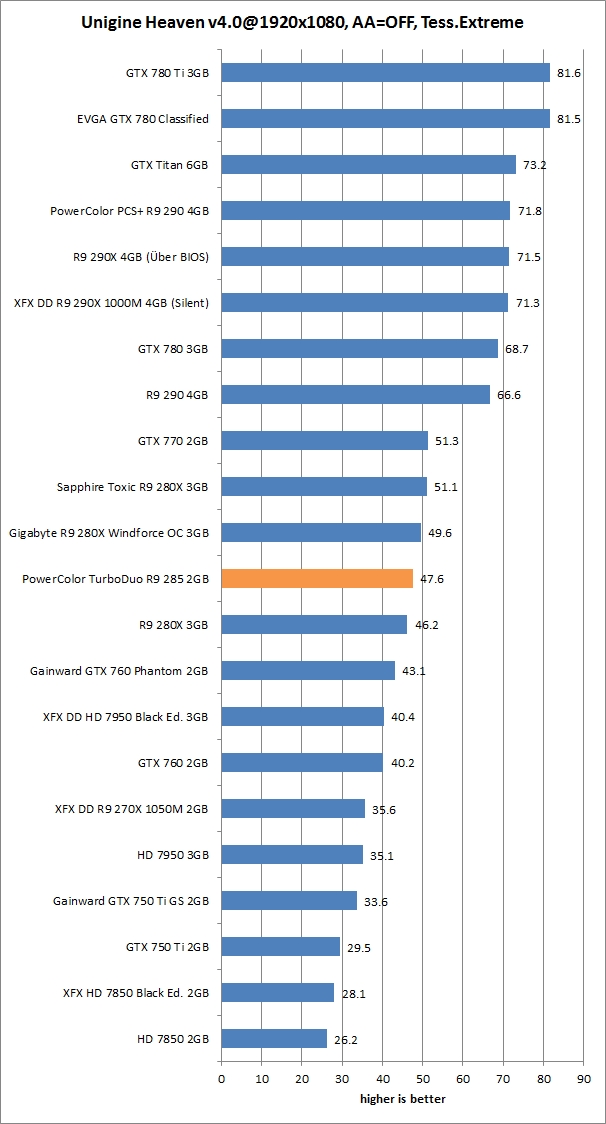
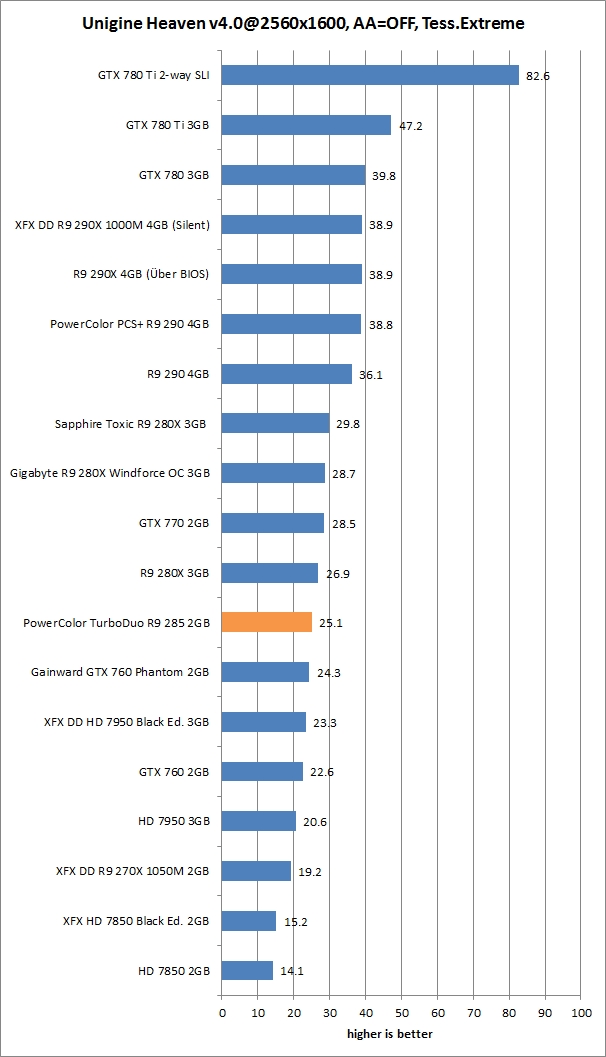
Overall the PowerColor TurboDuo R9 285 is a very quiet card. In idle we measured about 31 degrees Celsius. The fans are inaudible in 2D mode and quiet in 3D mode.
You may begin to wonder why the card easily hits 80 degrees when other reviewers reported temperatures closer to 70 degrees. We checked every part of the cooler and did not find any traces of damage. We tried using fresh thermal paste, which shaved off two degrees. PowerColor informed us that the test sample probably features a subpar GPU with more leakage. It is possible that consumers will also get similar cards, but there is no reason for concern, as 78 degrees under full load is perfectly safe.
Of course, it is possible to trade silence for lower temperatures by cranking up the fans. We tried speeding up the fans to 49%, which generated a bit more noise. The noise was bearable and the load temperature dropped to 68 degrees, a full 10 degrees less than in Auto mode.
Most users will not notice the card fans in Auto mode. Once the GPU starts heating up, there are no abrupt fan speed changes.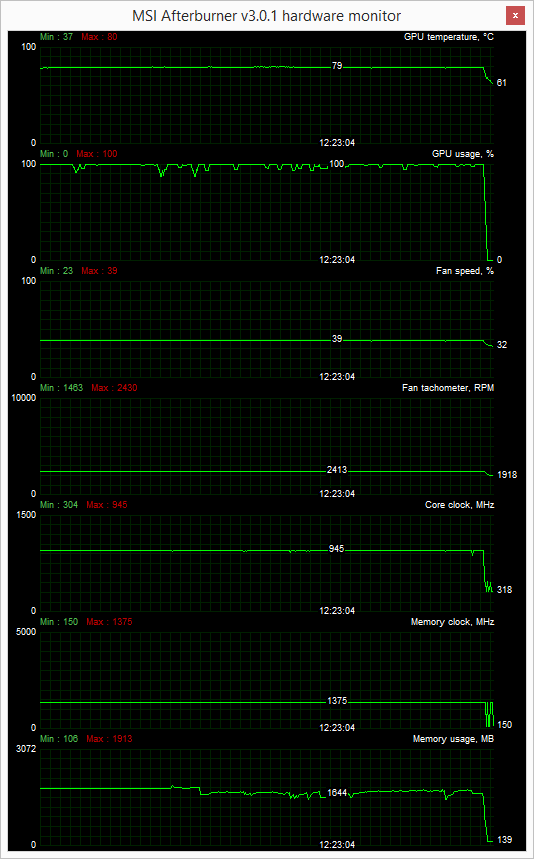
Image below shows the values afer thermal compound was changed and the fans are set to spin at 49% RPM.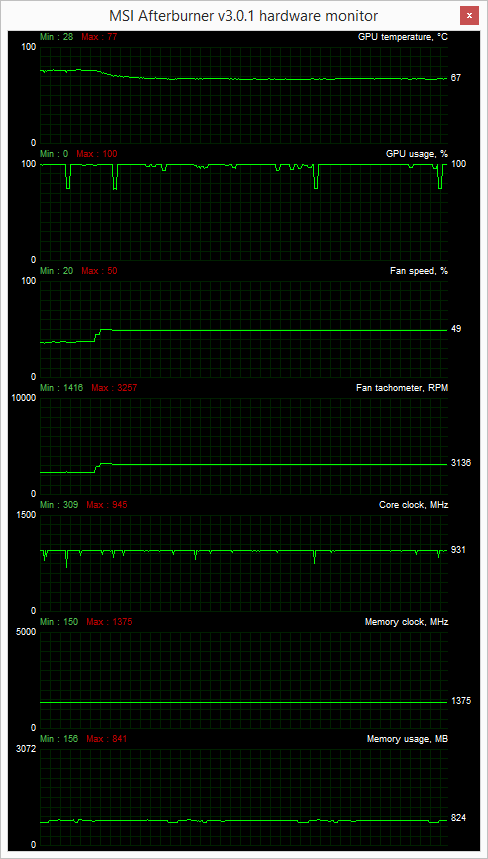
Tonga Pro GPU is power-efficient, with a 190W TDP. For comparison the R9 270X has a 180W TDP, the R9 280 has 200W TDP and the R9 280X has 250W TDP.
Our TurboDuo R9 285 card consumed less juice than the R9 270, but we cannot say whether this is attributed to PoweColor’s power management or the GPU itself. Like we said, we just got a weird piece of silicon – it consumed less than expected, but it generated a bit more heat.
Overclocking increased the consumption by 20W.
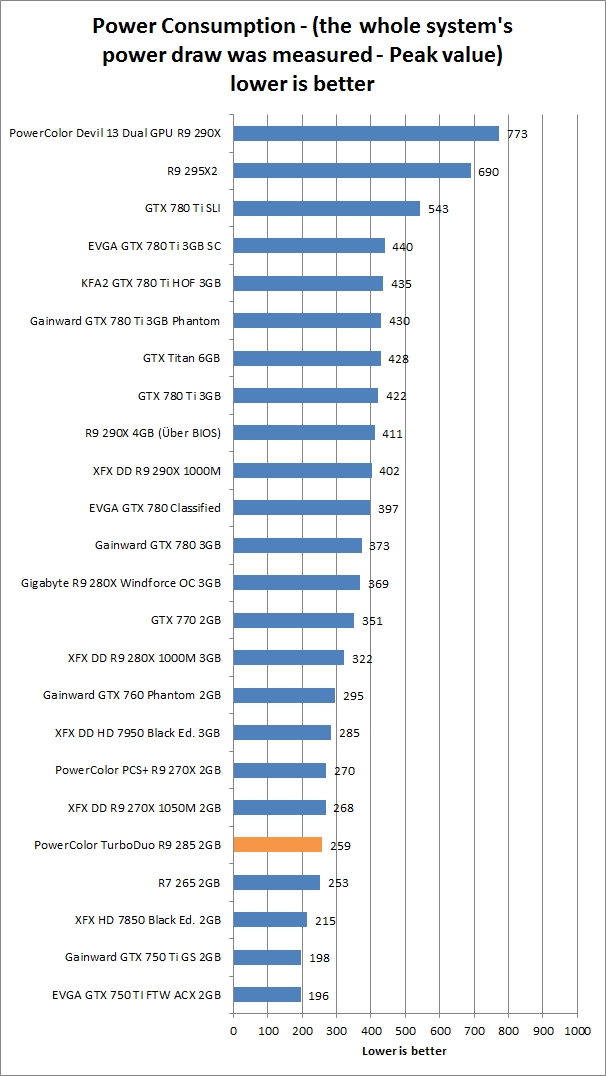
The maximum overclock on our sample card was 1138 MHz for the GPU (13% over reference and 9.8% over TurboDuo factory clock). However the GPU overclock is not impressive. We used the default fan and voltage settings as defined in the VGA BIOS. The problem was not high the GPU temperature. Although we kept the fans in Auto mode, the card coped well – the fans sped up and the GPU temperature remained low. After our overclocking run we measured a temperature of 66 degrees Celsius, quite a bit less than what we saw without overclocking.
We just feel we got a GPU that wasn’t willing to cooperate. The memory did not want to play ball beyond 1540MHz, but then again this is a relatively good result – 12 percent over the factory clock.
A quick Battlefield 4 benchmark showed that overclocking yielded an additional 7-percent performance boost.
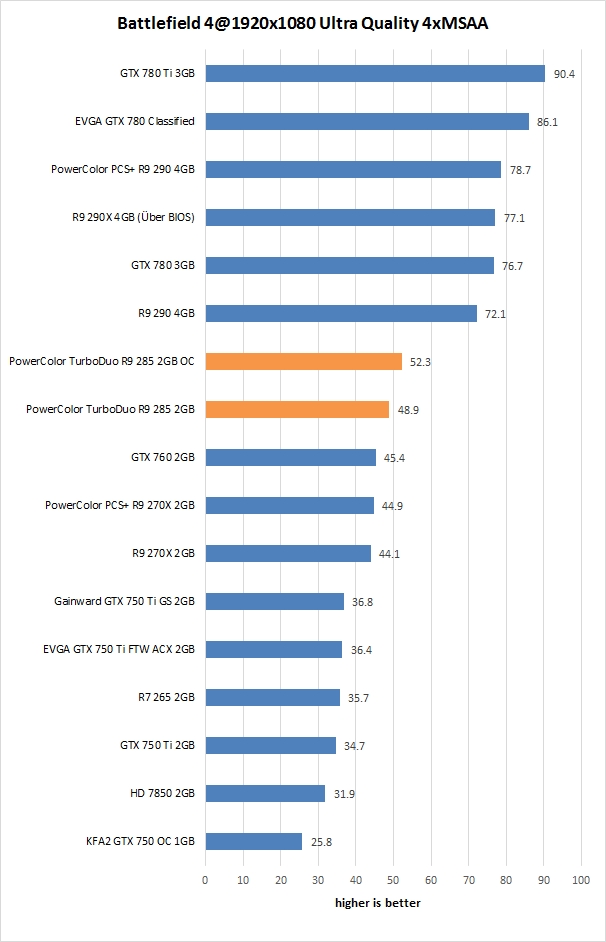
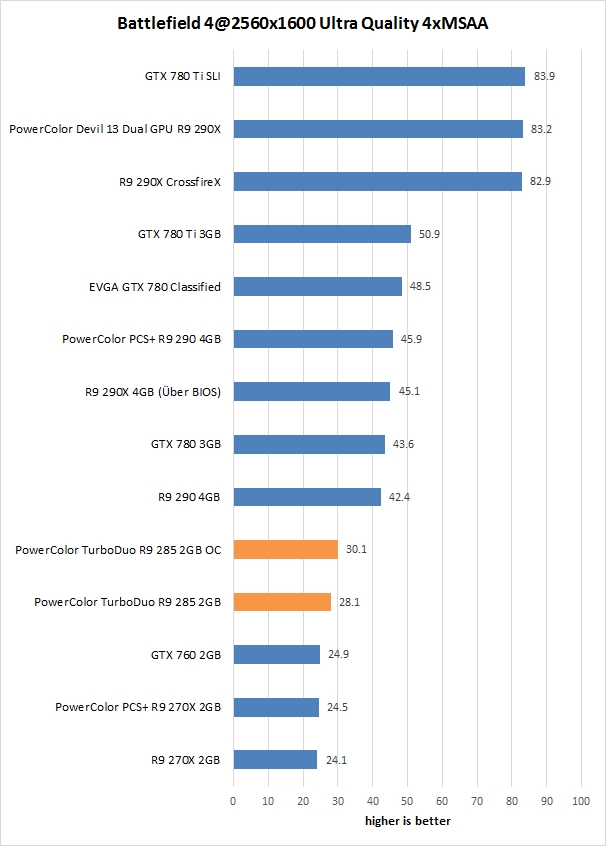
AMD new R9 285 based on Tonga GPU is starting to appear in shops and the prices are ok. We are talking about a product launched with a $240 price tag. The card we tested today, PowerColor TurboDuo R9 285 2GB is available in Europe for 232 euro.
The new card comes with the new features straight off the Hawaii GPU like True Audio, Mantle and Free Sync. On the performance side it sits very close to the R9 280 or GTX 760.
The R9 285 is an appealing new card for those willing to upgrade without missing out on the latest AMD tech. However, if you already own an HD 7950, HD 7970, R9 280, or GTX 760 and sheer performance is your main concern, it is better to wait a little bit more for the next AMD line. The performance gain simply would not justify an upgrade at this point.
In different real world tests the R9 285 ends up faster or slower than the R9 280, but overall it is very close. It is usually faster than Nvidia’s GTX 760. The R9 280 pulls ahead in some benchmarks thanks to the fact that it sports 3GB of memory. In any case 1080p gaming is a breeze with the R9 285 Tonga.
PowerColor’s factory overclock is subtle and it won’t have much of an impact on performance. However, additional overclocking can deliver a 10% boost on the GPU side and a 12% higher memory clock, allowing the card to trounce the GTX 760 and R9 280.

